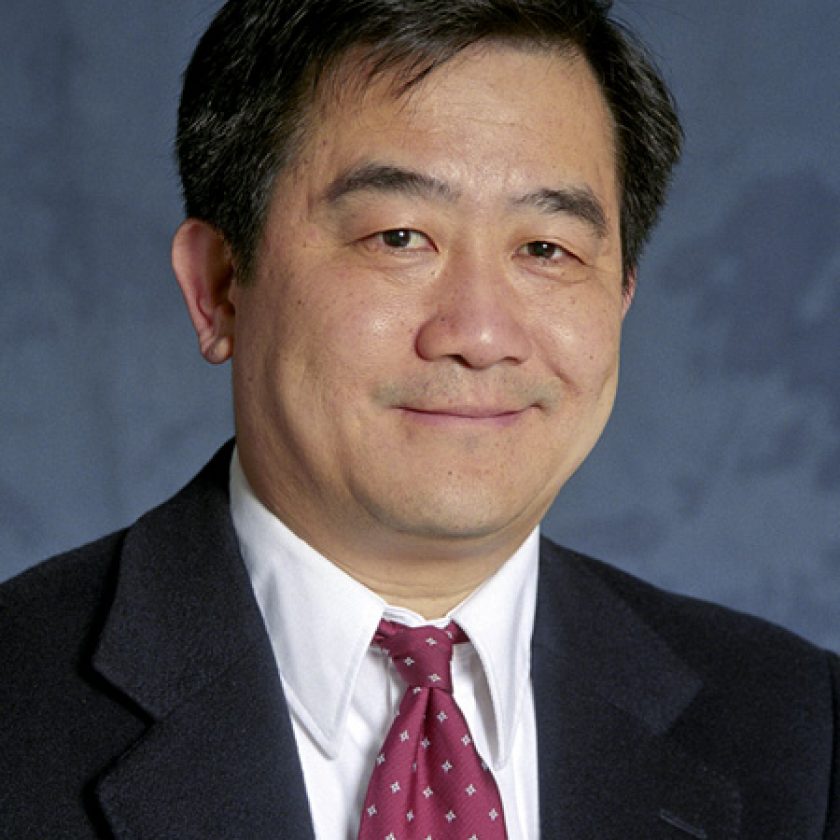Abstract
We recently introduced new dendritic structures to nonlinear optical (NLO) chromophores and polymers to investigate their effects on enhancing poling efficiency and alignment stability of these materials. Our aim is to tune their molecular topology systematically at nanoscale to minimize the strong intermolecular forces between the large chromophore dipoles. Compared with the conventionally designed organic NLO materials, this nanoscale architectural controlled approach provides a great opportunity to simultaneously optimize macroscopic electro-optic activity, thermal stability, and optical loss. In this talk, the latest progress in design, synthesis, and E-O properties of these molecular-engineered systems will be discussed. Specifically, the material systems ranging from 3-D shaped dendritic chromophores to fully-functionalized dendrimers with an NLO chromophore as the center core and crosslinkable groups on the periphery and novel dendron-coil block copolymers will be highlighted. By applying these nanoscale architectural control concepts and manipulations, we have recently achieved unprecedented E-O activity of these materials (the E-O coefficient is one order higher than the state-of-the-art inorganic material, LiNbO3). This development will help to launch a new paradigm for molecular engineering of the next generation high-performance photonic materials.
In addition to the study on NLO materials, our recent results in molecular electronics will also be highlighted. We have developed a design criterion for functional conjugated molecules with controllable molecular architectures. The size, shape, orientation and ordered patterns of molecular wires or switches on inorganic substrates can be engineered through a delicate interplay of the intermolecular p-p stacking, hydrogen bonding, and chemisorptive substrate-linker interactions. The ability to assemble predictable two-dimensional molecular crystals and understand the order-related electronic behavior of single molecular components may allow us to design a platform for further miniaturization of electronic devices.
Biography
Alex Jen received his Ph.D. degree in chemistry from the University of Pennsylvania in 1984 under the guidance of Professor Michael Cava. He started his industrial career as a research chemist at Allied-Signal Inc., from 1984-1988. He was responsible for pioneering the discovery of several series of processible and thermally stable conducting polymers for optical and electronic applications. Among his important inventions, thermally stable polyanilines have led to the commericalization of anti-static conducting polymers by Allied-Signal Inc. The discovery of processible and environmentally stable poly 3-alkylthiophenes and polyheteroaromatic vinylenes provided the foundation for materials being broadly studied in organic LEDs and nonlinear optics.
In 1988, he joined EniChem and established the NLO program in the company. From 1988-1994, he led a team to successfully develop several classes of highly active and thermally stable NLO chromophores and polymers for electro-optic applications. He joined ROI Technology in 1995, a device and materials oriented company, and worked as Vice President of materials. He was responsible for the successful development and implentmentation of highly efficient and thermally stable NLO polyimide material system (Optimer) in high speed electro-optic switch devices (HEOS).
In 1997, he joined Northeastern University as an Associate Professor at the Department of Chemistry. In 1999, he moved to University of Washington. He is currently the Boeing-Johnson Chair Professor in the Department of Materials Science and Engineering and Professor in the Department of Chemistry. He is the co-author of more than 40 patents and 300 publications in chemistry and materials related journals. He has been invited to give more than 100 talks in numerous major industrial laboratories and universities both abroad and in U. S.


